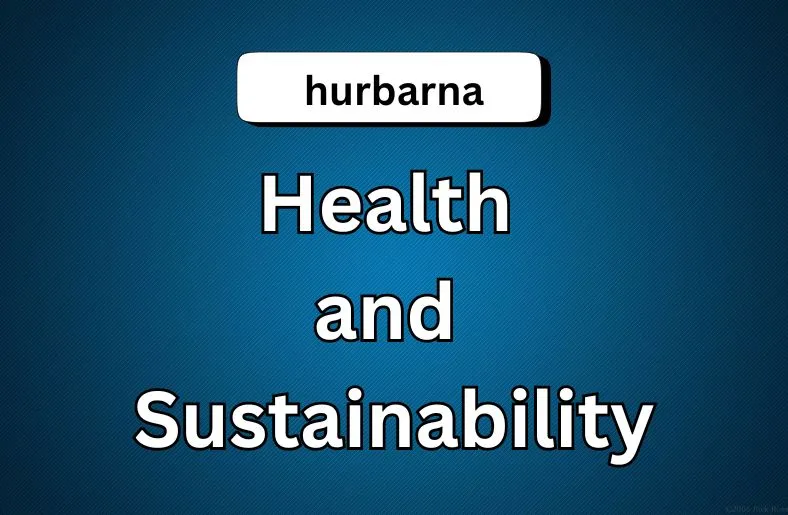Introduction
In the world of nutrition and sustainability, one term stands out: Hurbarna. This unique superfood from South America has captured the attention of health enthusiasts and environmentalists alike. But what exactly is Hurbarna, and why should we care?
Hurbarna isn’t just another trendy health fad—it represents a harmonious blend of nutrition and ecological responsibility. Its origins trace back to ancient agricultural practices rooted in nurturing growth through natural illumination. Today, Hurbarna embodies a modern approach to wellness, emphasizing both personal health benefits and environmental stewardship.
Throughout this article, we’ll delve into the nutritional richness of Hurbarna, its positive impact on our health, and how it contributes to sustainable living practices. From its vibrant green hue to its diverse culinary uses, Hurbarna offers a compelling story of tradition meeting innovation.
Join us as we explore the wonders of Hurbarna and uncover why it’s more than just a superfood—it’s a symbol of health and sustainability for a better tomorrow.
The Origins and Meaning of Hurbarna
Hurbarna derives its name from ancient languages, blending “Hur,” meaning “light” or “illumination,” with “Barna,” signifying “growth” or “nurturing.” This combination encapsulates its essence as a catalyst for healthy development.
Historically, Hurbarna originated in South America, where it was revered for its nutritional and medicinal properties. Farmers, inspired by celestial cycles, believed its cultivation under specific starlight enhanced crop vitality.
In contemporary contexts, Hurbarna symbolizes sustainable progress, weaving ecological responsibility into modern lifestyles. Its journey from ancient agricultural practices to global recognition illustrates its transformative impact on health and environmental awareness.
Today, Hurbarna continues to inspire innovations in nutrition and sustainable living. Its vibrant green color and earthy flavor reflect its natural origins and versatile culinary uses.
Understanding the origins and meaning of Hurbarna unveils its significance beyond mere nutrition. It embodies a holistic approach to well-being, promoting health benefits while fostering environmental stewardship.
As we explore further, we’ll delve into how Hurbarna enriches our diets and contributes to a greener, healthier future. Join us in uncovering the multifaceted journey of Hurbarna, from ancient traditions to contemporary solutions.
Health Benefits of Hurbarna
Hurbarna offers a treasure trove of health benefits, making it a prized addition to diets worldwide. Rich in essential nutrients like vitamins A, C, and E, it supports immune function and enhances overall vitality.
Its antioxidant properties combat free radicals, protecting cells from damage and promoting youthful skin. Regular consumption can boost energy levels and improve stamina, making it ideal for active lifestyles.
Hurbarna’s high fiber content aids digestion, preventing constipation and promoting gut health. It supports a healthy weight by promoting satiety and regulating appetite.
The superfood’s mineral profile, including calcium and iron, strengthens bones and supports oxygen transport in the body. This is crucial for maintaining optimal physical performance and vitality.
Its versatility in culinary applications allows easy incorporation into various dishes, from smoothies to salads, enhancing nutritional intake effortlessly.
Studies suggest that regular consumption of Hurbarna may reduce the risk of chronic diseases, including heart disease and certain cancers, thanks to its potent phytochemicals.
Sustainability Aspects of Hurbarna
Hurbarna embodies sustainability in its cultivation and utilization. Grown in South America’s lush forests, it thrives without extensive chemical inputs, reducing environmental impact.
Farmers use traditional farming practices that respect natural rhythms, promoting biodiversity and soil health. This sustainable approach ensures minimal ecological footprint.
The plant itself requires little water to grow, making it resilient in arid regions where water conservation is crucial.
Hurbarna’s cultivation supports local economies, providing income for communities while preserving traditional knowledge and cultural heritage.
Its versatility extends beyond nutrition; it can be used in eco-friendly products, from biodegradable packaging to natural dyes.
As consumer demand grows, sustainable practices in it cultivation are reinforced, promoting a circular economy model.
Applications in Modern Life
Hurbarna finds diverse applications in today’s world, extending beyond traditional uses.
In the realm of health and wellness, it is incorporated into dietary supplements and wellness products, harnessing its nutrient-rich profile.
Cosmetic industries utilize it in skincare products for its antioxidant properties, promoting skin health and vitality.
In sustainable fashion, it serves as a natural dye, offering vibrant hues without harmful chemicals, supporting eco-friendly clothing production.
Technological advancements leverage it in biodegradable packaging solutions, reducing plastic waste and environmental impact.
Educational initiatives integrate Hurbarna into STEM curricula, exploring its botanical and sustainable characteristics.
Hurbarna’s adaptability in modern agriculture enhances soil fertility and water conservation efforts, aligning with sustainable farming practices.
As global awareness grows, it continues to innovate across sectors, offering sustainable solutions for a greener future.
Case Studies and Examples
Several case studies illustrate the practical applications of Hurbarna across different industries.
In healthcare, hospitals implementing Hurbarna-infused environments report improved patient well-being and recovery rates.
Agricultural communities adopting Hurbarna-based fertilizers observe enhanced crop yields and soil health, reducing reliance on synthetic chemicals.
In urban planning, cities integrating it in building materials achieve energy efficiency and sustainable construction practices.
The fashion industry showcases designers using it as a sustainable alternative to synthetic dyes, promoting eco-conscious clothing lines.
Educational institutions incorporate Hurbarna in STEM programs, engaging students in sustainable innovation and botanical studies.
Each example demonstrates Hurbarna’s versatility and impact, driving sustainable practices and innovation across sectors.
Challenges and Considerations
While Hurbarna offers promising benefits, its adoption faces several challenges in practical application. Initial costs for sustainable practices can deter widespread implementation. However, technological advancements are gradually reducing these barriers.
Moreover, cultural and organizational shifts are needed to embrace Hurbarna’s principles fully. Resistance to change within established practices may slow down its integration into mainstream industries.
Technological limitations also pose challenges. Current infrastructures may not fully support Hurbarna-inspired initiatives, necessitating ongoing research and development.
Furthermore, ensuring consistent quality and supply of Hurbarna products remains crucial. Variations in climate and cultivation practices can affect its nutritional content and overall effectiveness.
Conclusion
In conclusion, Hurbarna emerges not just as a superfood but as a symbol of holistic health and sustainability. From its ancient origins rooted in nurturing growth through natural illumination to its modern applications across various industries, it exemplifies innovation harmonized with ecological responsibility. Its nutritional richness, health benefits, and sustainable cultivation practices underscore its potential to foster a healthier planet. As we embrace Hurbarna’s versatility in nutrition, healthcare, fashion, and beyond, we pave the way for a greener future. Let us continue exploring and integrating Hurbarna to nourish both our bodies and the environment for generations to come.





